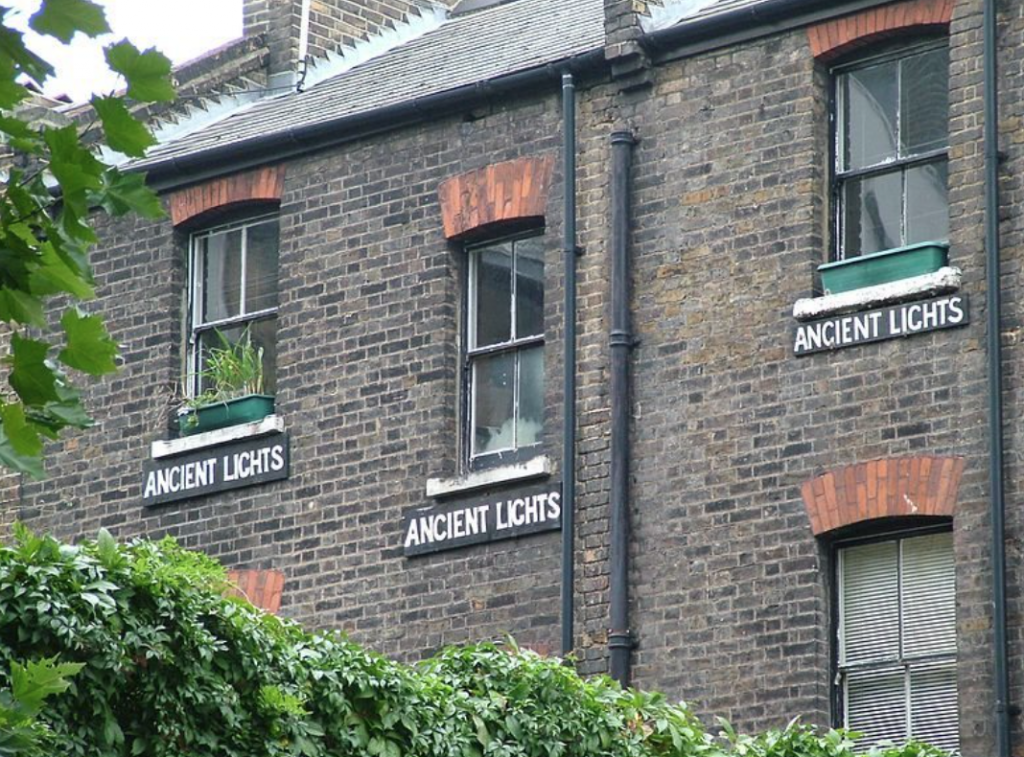Ancient Light
If you are a homeowner in Great Britain, you are entitled to live under the English Common Law Principle of “Ancient Lights”, i.e. you have the “right to unobstructed passage of light and air from adjoining land if you have had uninterrupted use of the lights for twenty years.” The Irish author, John Banville, put it more concretely in his novel Ancient Light: You have the right to have the sky remaining always visible at the top of the windows even when viewed from the base of the opposite wall.
Ancient light seems to me to have embedded in it a vast uncertainty, evolving revelations, transient guides and transitory gifts, dark obscurities and radiant glories, great mysteries, sudden clarities. And we all have the right to that light without stony walls of institutionalized doctrinal embedded “certainties” blocking our view. We all can learn; we all can grow; we all can test and reason; and, humbly and reverently, we all can discern what we need to know from the ancient light of others and our own.
Those are just words though, and much as I would like to whisper or yell them into a bishop or two’s ears (for they may be deaf!), – and, given these past few weeks’ events and profound revelations, into all racist’s ears, including my white privileged clueless at times own – I know we need so much more to bring the ancient and modern light of justice to our Church and country.
One idea I had not heard mentioned, recently anyway, is for us to redesign literally our sacred spaces to make sure, from all the dark corners, we always see the sky.

I saw just this kind of design created in the Holocaust Museum I visited in February in Jerusalem. The museum itself is a replication of a large sword stuck into hard stone. You actually enter where the sharp triangle point has entered into the wall of stone. The long central shaft of the sword through which you will walk inclines higher and higher until it finally ends in a wall of glass, the only source of natural light, overlooking forests and valley. Your way up the shaft is dimly lit and blocked by encased exhibits so that you are forced into rooms going left and right telling, in art, re-creations, pictures, objects, voices their horrific and unimaginable, yet often inspiring, stories.
At the beginning, as I said, you stand within a triangular room and look toward the hard stone on which is projected a moving – in all senses of the word – series of short motion pictures, old films, sepia colored, jerky as ancient film can be, of life in the shtetls, villages, schools, and streets in which the late 19th and early 20th Century Eastern European and Russian Jewish people lived. Peddlers ply their trade from carts; children roam and mime for cameras; babuskaed old women laugh and shyly hide their faces; men and women dance and sing or buy fruit or drive geese. Perhaps because of the shape of the room or the way the films dance and fluctuate, however, you begin to feel as if you are standing on shaky ground. You become disoriented, slightly dizzy, and tense, strangely unable to enjoy these scenes of merriment, let alone of daily life. The sword has pierced and you know what is to come.
I won’t describe what was in the rooms. I know you know or can imagine. After wandering through, even to the last room where victory seems so empty after all you have seen, you climb, with relief, to the glass overlook. Here you are, finally in the full light of day, looking at wooded land and lush undergrowth created by all those who, back in the late 1940’s and 50’s had donated money to “plant a tree in Israel,” beauty created by worldwide community. But even here, there is a grave problem. You have stepped out into a room with three glass walls to see a beautiful new world, but there is also glass underneath you. You are not on solid ground but on a precipice. You always will be. My hitherto uplifted heart broke.
We must never let anyone blot out ancient light. We must work to preserve and protect it. We are always on a precipice, and we desperately need to light our way.
